How "Vibe Coding" Changed the Game
In the ever-evolving world of software development, a new term has captured the imagination of creators everywhere: "vibe coding." Coined by renowned AI scientist Andrej Karpathy, the phrase perfectly describes a revolutionary shift in how we build. It's the art of translating a feeling, a "vibe," directly into functional code with the help of a powerful AI assistant.
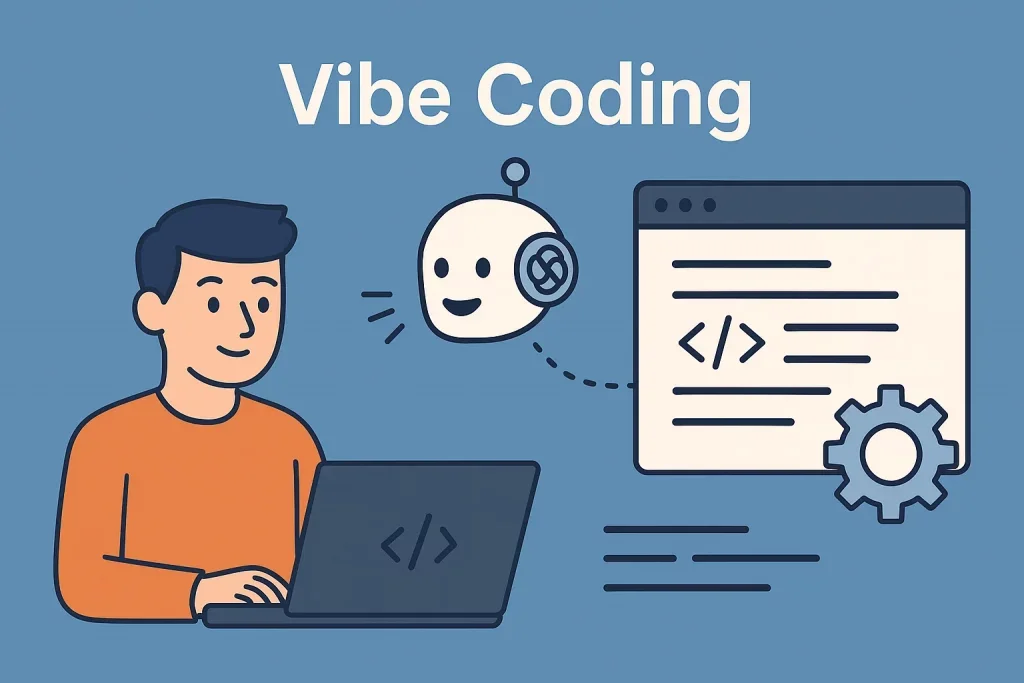
This new paradigm feels less like engineering and more like a creative conversation. It's a developer and their AI partner performing a brilliant solo, rapidly composing an application from a simple, natural language prompt. The rigid rules of syntax and structure take a backseat to pure, unadulterated creation.
The impact of this approach has been immediate and profound. It has torn down old barriers, empowering a new generation of builders and accelerating the pace of innovation. The core appeal of vibe coding lies in its elegant simplicity and speed:
- From Idea to Prototype in Minutes: It collapses the development cycle. What once took weeks of manual coding can now be prototyped in a single afternoon. This allows for rapid market testing and iteration, turning vague concepts into tangible products faster than ever before.
- Democratizing Creation: You no longer need to be a seasoned programmer to build software. Vibe coding empowers designers, entrepreneurs, and domain experts to bring their unique visions to life, transforming them from idea-holders into active creators.
- Focus on the "What," Not the "How": By offloading the tedious work of writing boilerplate code and wrestling with syntax, developers can stay focused on the bigger picture—solving the user's problem and crafting a delightful experience. It keeps you in the creative zone, where the best ideas flourish.
In essence, vibe coding is the ultimate soloist's performance—a fast, agile, and impressive display of turning inspiration into reality. It has rightfully earned its place in the spotlight and fundamentally changed what we thought was possible in software creation.
When a Solo Act Isn't Enough
The magic of the solo performance is undeniable. For a quick prototype, a personal project, or a creative sprint, vibe coding is a phenomenal partner. But what happens when the curtains close on that initial act and the project needs to grow into a robust, scalable, and maintainable application? What happens when the audience grows from one to one million?
This is where the very freedom that makes vibe coding so appealing can also become its biggest drawback. A development process guided solely by a "vibe" often misses the essential pillars needed for long-term success. As a project grows more complex, even a talented solo developer begins to feel its limitations.
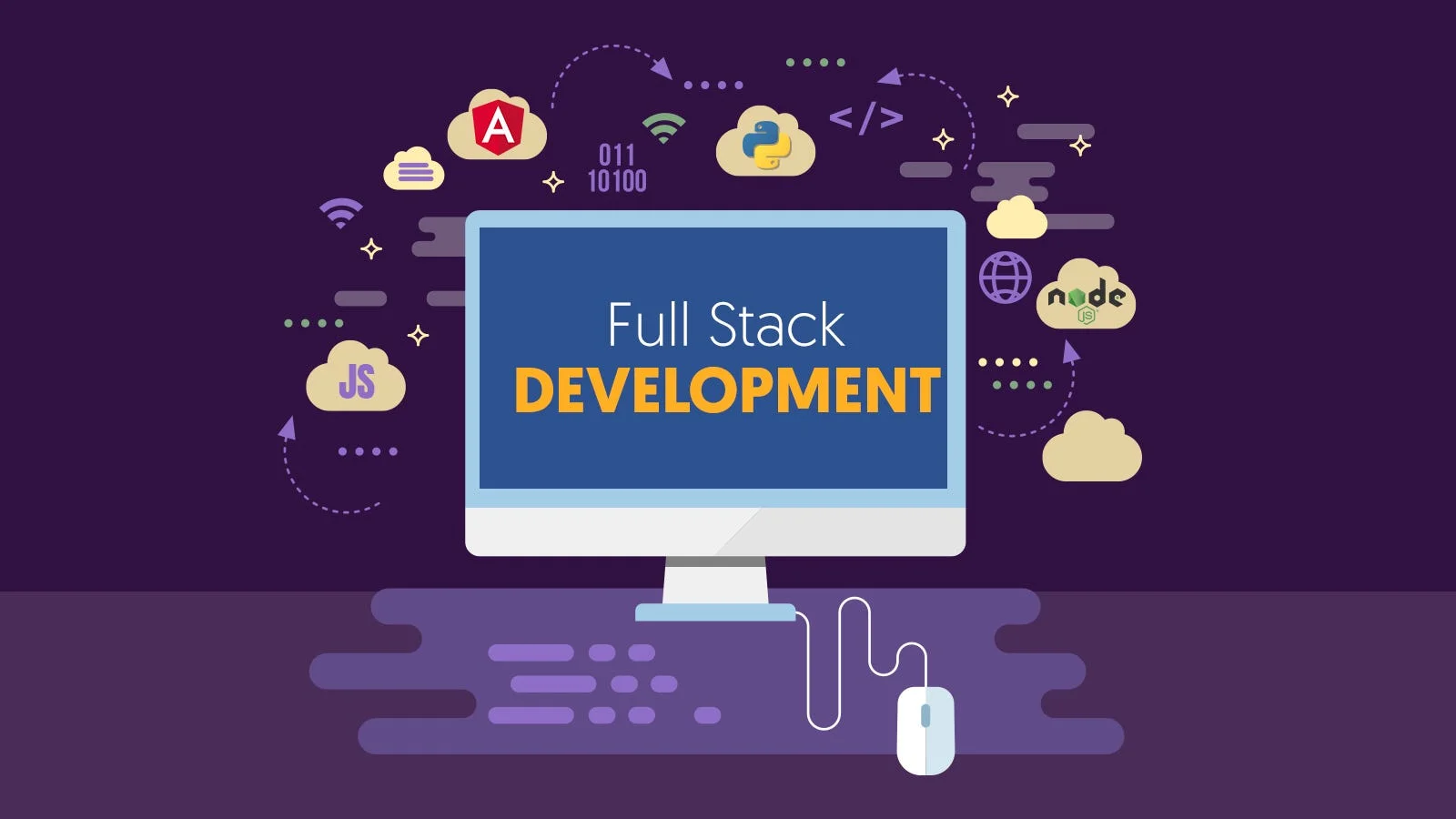
Teams quickly run into predictable, high-stakes challenges:
- The Chaos of Unstructured Creativity: A "vibe" doesn't produce an architectural blueprint. The code generated, while functional, often lacks a coherent structure. This "spaghetti code" is notoriously difficult to debug, modify, and extend, accumulating technical debt with every new feature.
- The Black Box of Development: The final code appears as if by magic, but where are the crucial artifacts that professional teams rely on? Vibe coding typically skips the creation of Product Requirement Documents (PRDs), system design diagrams, and comprehensive test plans. Without this documentation, onboarding new developers or handing the project off becomes a nightmare.
- Hitting the Scalability Wall: A single AI agent, acting as a jack-of-all-trades, can't replicate the specialized expertise of a full development team. It can't be a product manager, a senior architect, and a QA engineer all at once. For enterprise-grade applications that demand security, reliability, and performance optimization, this lack of specialized roles is a critical bottleneck.
The initial spark of a "vibe" is essential, but it's not enough to build an enduring product. To move from a clever prototype to a professional-grade application, you need more than a soloist. You need an orchestra.
Introducing "Symphony Coding"
When a solo act needs an orchestra, MetaGPT X is the guiding force. We think the future of AI-powered development goes beyond just a smarter assistant—it's about leading a smarter team. That's the idea behind "Symphony Coding," a structured, collaborative, and transparent way to build serious software.
Symphony Coding goes beyond the unstructured "vibe" by mimicking the entire workflow of a top-tier software company. It's not just a single agent handling everything. Instead, MetaGPT X brings together a dedicated team of specialized AI agents who collaborate to realize your vision.
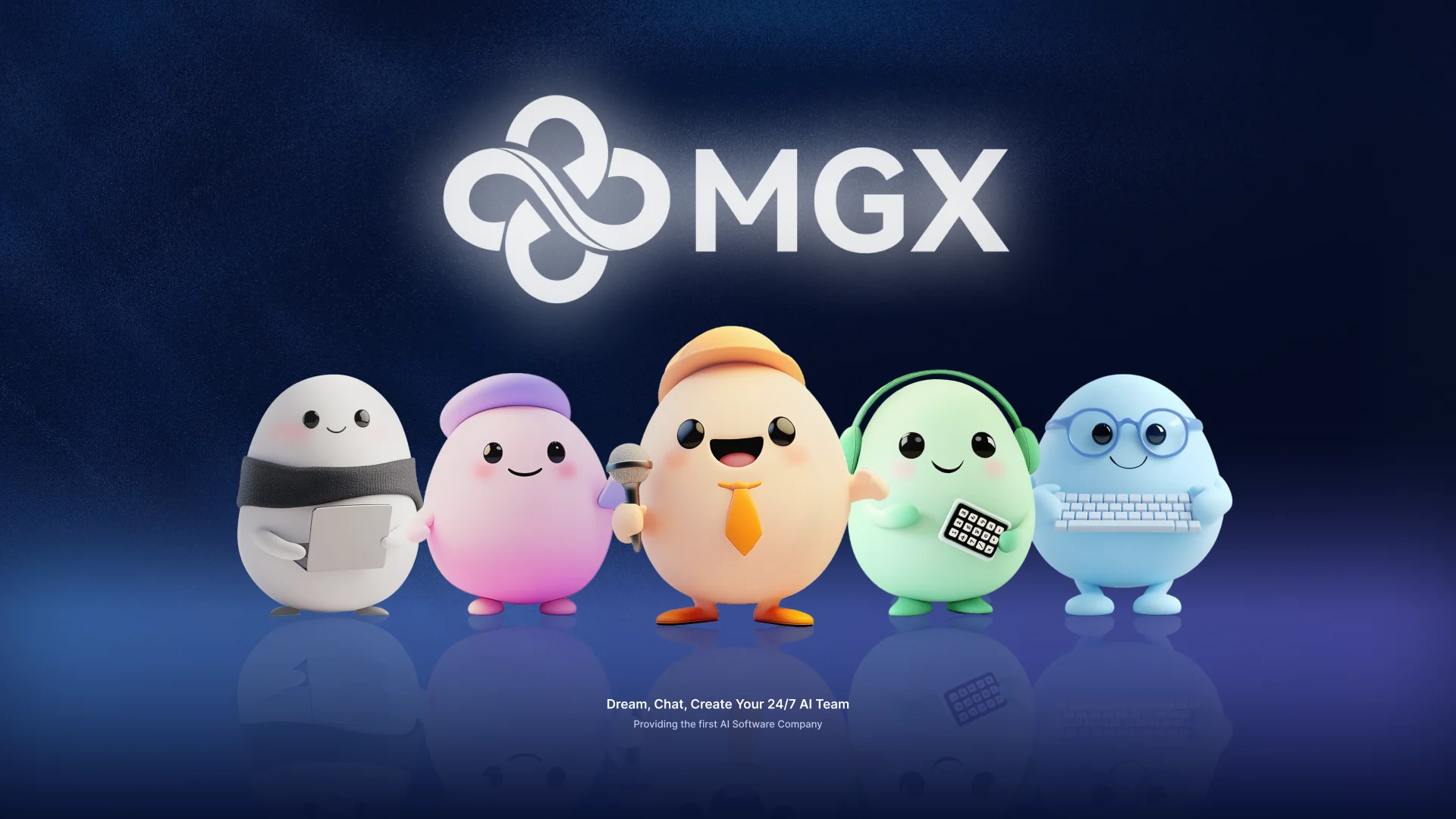
Imagine starting a project and instantly having access to:
An AI Product Manager that takes your one-line idea and refines it into a detailed Product Requirement Document (PRD), ensuring clarity and focus before a single line of code is written. This directly addresses the black box problem, creating a clear paper trail from the outset.
Next, an AI Architect steps in. It analyzes the requirements and designs a robust and scalable system architecture, complete with diagrams and technical specifications. This structured approach prevents the chaos of unstructured creativity, laying down a solid foundation instead of a tangled mess of code.
Only then do the AI Engineers start their work, writing clean, efficient, and well-documented code that follows the architect's blueprint. This division of labor is how professional software is created, and it's the only way to overcome the scalability limit of a single-agent system.
The entire process is governed by a core philosophy: Code = SOP(Team). Development isn't a random walk; it's a standardized operating procedure that guarantees high-quality, consistent, and fully documented results. With MetaGPT X, you aren't just getting code. You're getting the complete, professional output of an entire AI development team, fully orchestrated and ready for primetime.
See the Symphony in Action
Let's move beyond theory and witness Symphony Coding in practice. Instead of a simple game, imagine you're tasked with building something that truly tests the limits of development complexity: a Customer Relationship Management (CRM) system for a growing sales team.
With traditional vibe coding, you might prompt: You'd get some code, maybe a basic interface, but you'd be left wondering: Where's the database schema? How do I handle user permissions? What about data security and compliance? The solo act delivers a sketch, but you need a blueprint.
MetaGPT X doesn't just start coding. It orchestrates a complete development symphony:
The AI Product Manager delivers a comprehensive PRD that includes:
- User personas (Sales Rep, Sales Manager, Admin)
- Feature specifications for lead scoring and pipeline stages
- Integration requirements with email and calendar systems
- Compliance considerations for data privacy
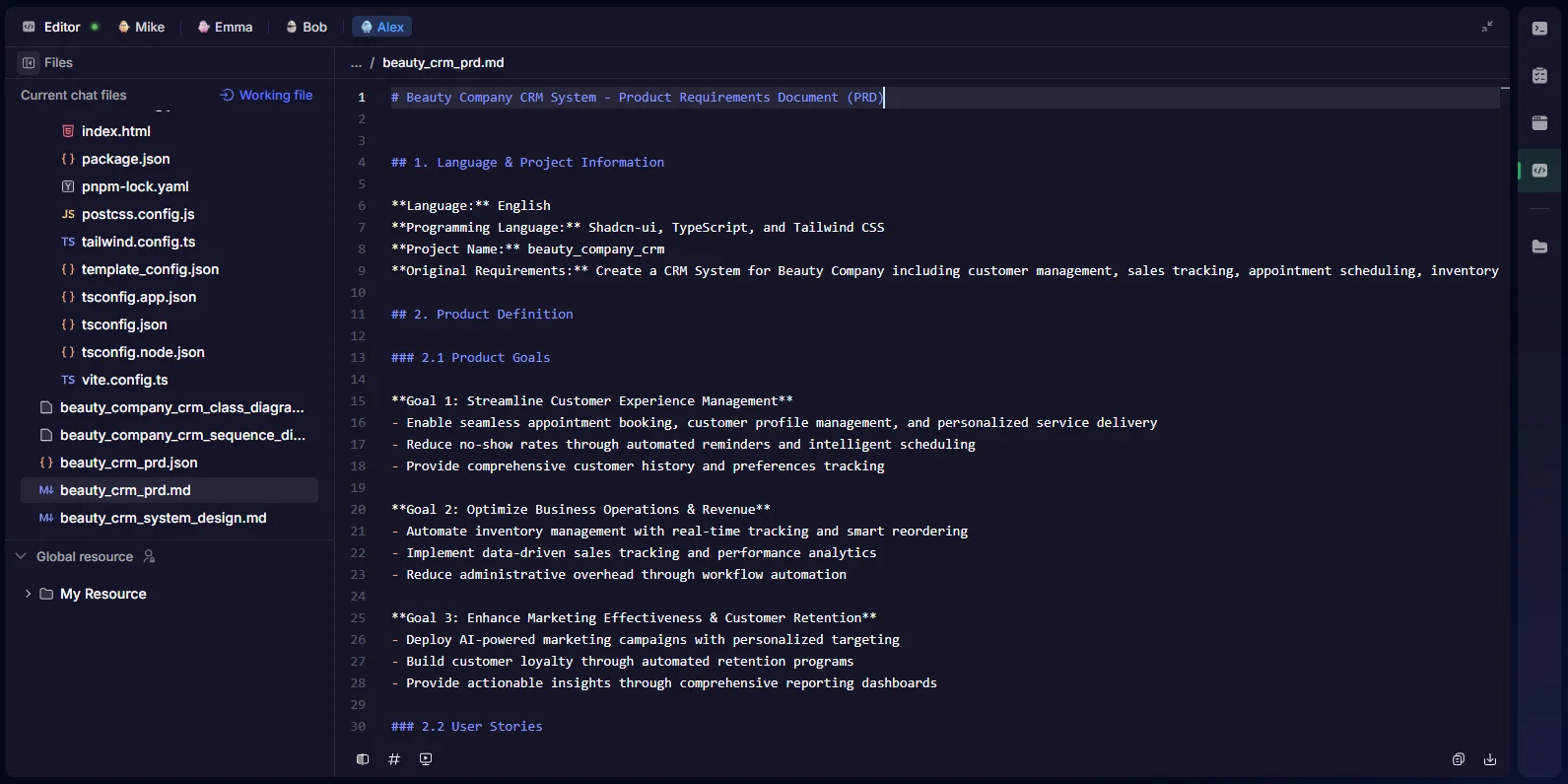
The AI Architect follows with a detailed system design:
- Database schema with proper relationships between leads, contacts, and opportunities
- API architecture supporting role-based access control
- Scalable microservices structure for future growth
- Security framework addressing data encryption and audit trails
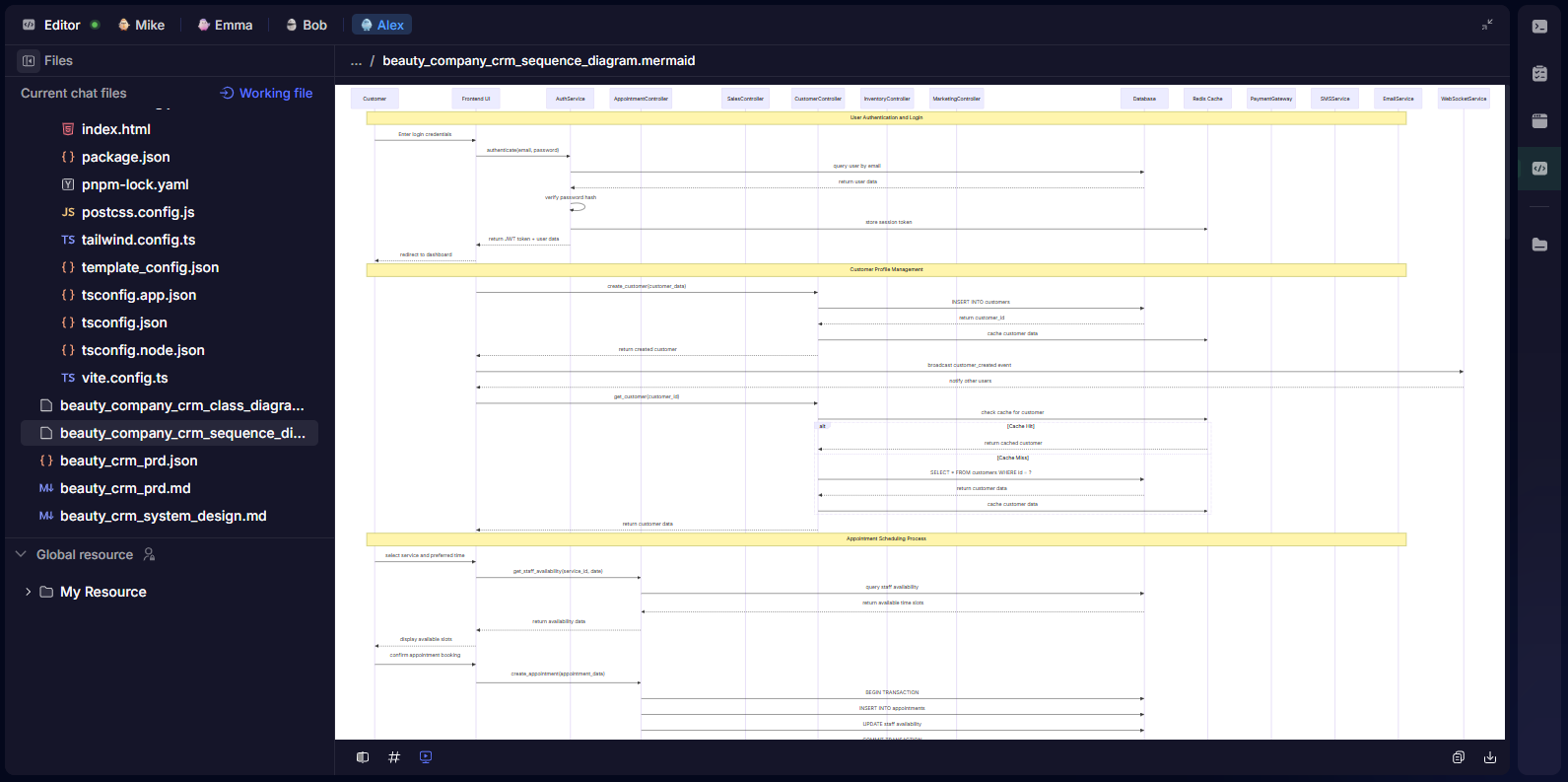
The AI Engineering Team then builds:
- Clean, modular code with proper separation of concerns
- RESTful APIs with comprehensive documentation
- Responsive frontend with intuitive user workflows
- Database migrations and seed data for testing
The result? You don't just get a working CRM—you get a complete project repository that looks like a seasoned development team delivered it. Every component is documented, tested, and ready for production deployment or further customization by your technical team.
This is the difference between a solo performance and a full symphony. One gives you a tune; the other gives you a masterpiece.
Is Your Vision a Sketch or a Blueprint?
The choice between vibe coding and Symphony Coding ultimately comes down to a fundamental question: What does your project truly need?
If you're exploring an idea, testing a concept, or building a personal project, the solo act of vibe coding might be exactly what you need. It's fast, it's fun, and it gets you from zero to something quickly.
But if you're building software that matters - something that needs to scale, something others depend on, something that reflects your business or reputation - you need more than a basic outline. You need a solid plan, a complete picture.
MetaGPT X transforms the way serious software gets built. It combines the creative spark of vibe coding with the structured discipline of professional development. You get the speed of AI-driven creation with the reliability of enterprise-grade processes.
It's not a question of whether AI will change how we develop software; it already has. The real question is whether you'll be satisfied with just one tool or aim to lead the entire symphony.
Ready to move beyond the vibe?
- Start your first Symphony Coding project: Try MetaGPT X today
- Join the community: Connect with other Symphony Coders
Your next great project deserves more than a solo act. It deserves a symphony.
 Posts
Posts